
Issue #: 151
Published: January / February 2017
- Price per issue - digital : 5.40€Digital magazine
- Price per issue - print : 6.20€Print magazine
- Access to Multihulls World digital archives Digital archives
Simoust around the world (again!!!!)
Our first clients in the Virgin Islands: off to a good start!
Scrolling back a little…
Laure, Pauline, Aline and Jean-Louis were trying to have a family adventure on a sailboat in the Pacific. They slipped their lines in Tahiti, bound for New Caledonia, via Tonga, Fiji and Vanuatu. After a year on a 33 foot monohull, with the girls following the French home-schooling program, everyone was thriving: mission successful!
To continue the adventure, our little family set about looking for a bigger boat, and one with two hulls. Meeting up with other families who had chosen the comfort of multihulls had us converted. At Balaruc-les-Bains, near Sète in the South of France, our dreams came true when we found a human-scale boatyard, Sud Composites, and their blue water cruising catamarans: the Switch 51. We had an excellent relationship not only with Alain and Adès, the founders and managers, but also with the workforce. Simoust was the 5th in the series, and we put a lot into the interior fitting out, the choice of rigging and so on. Finally in September 2001, Simoust was christened, and we were ready for the big departure! We sailed down to Gibraltar, then the Canaries and the Cape Verde islands, followed by a relaxed Atlantic crossing to Barbados in 14 days. Favorite memories? The kids doing their first night watches, and all swimming together around the boat in the calms. Then at last discovering the islands of the West Indies.
In 2003 Aline and Jean-Louis decided they were each going to follow a different course. So what was next for Simoust? Laure and I convinced our mother: we’re up for a challenge. Let’s continue our life on the water which we love so much, just us girls, and why not?!
A trip to the wild islands of the Grenadines. That’s the freedom of a boat
But as simple crew, we now had to become self-sufficient. There was a lot to learn!
Boat buddies gave us a thousand and one bits of advice; we took some effective sailing “lessons”, and some notes to reassure us (on how to reef, using the parallel rules, etc). And we also did a certain amount of learning on the job, by ourselves. The self-help between boaters continued: one taught us the rudiments of mechanics in exchange for French lessons for his son who was studying for his exams. The hurricane seasons (July through November) were spent in the islands of Venezuela, out of the reach of any hurricanes which pass further north. This often allowed us to see many of the same boats and kids of our own age. It was like a kind of migration. It was also our first contact with Latin-America. We set about trying our Spanish (perfect for practicing the theory we’d learnt while homeschooling!) and we made great friends with the fishing families of the Los Testigos islands.
Doing my high school diploma at the French college in Caracas, we did some coastal cruising, keeping close to the continent. With some areas being rather insecure, and in the absence of other sailboats, we sometimes invented some wacky, but successful, little ruses: hanging up some XXL-sized t-shirts and putting men’s shoes out, to make it look like there was a masculine presence on board in the form of a captain! Arriving in a marina, we sometimes had to make out that the captain was sick, and had stayed on board. An all-female crew is inconceivable in Venezuela! But our travels inland with our backpacks allowed us to discover many other aspects of the country, far from the problems in the cities: the people wear their hearts on their sleeves, always ready to laugh and tease. And what diversity! High Andean mountains at Merida, the Gran Sabana plateaus and the Tepui mountains bordering the Brazilian Amazon Rainforest. It’s important to know how to get away from the boat, not forgetting the homeschooling kit!
The three of us continued to sail throughout the West Indies until 2005. Life on board suited us well, sailing and changing places regularly, each having our own favorites. We studied hard, and our breaks for fishing with friends, kayaking or diving off the bows, were more than motivating! The experience really made us close-knit.
With our diplomas passed, Laure, the eldest, set off to the United States to practice her English, then back to France to engineering school where she was to study tropical agricultural science. So Mom and I stayed on board, and I took on more and more of the sailing responsibilities.
From North to South, from the BVI to Venezuela, the last two years of school saw some great sailing and stopovers, we met some great people on various different boats, and snorkeled on reefs, to take our mind off our studies which were becoming more and more intense. Final year philosophy by correspondence, now that’s something else!
There were also some longer stopovers, such as in Martinique, where I had time to mix with other crews. I trained and raced on Surprise dayboats: the atmosphere was great, there were young people, grown-ups and also an all-girl crew. We did various local regattas, the Combat des Coques, Carnival Regatta, Coupe Féminine, Bordée de la St.Jean and also the Tour de Martinique and Bequia races… and Simoust served sometimes as the race headquarters and post-race aperitifs venue!
For my final year of high school I tried studying ashore at Fort-de-France, but ended up returning to home-schooling after two months: despite having an exceptional philosophy teacher, a lot of time seemed wasted, and some subjects were of poor standard. We were used to the efficiency of home-schooling: we quickly did the subjects we found easy, then put more time into harder ones, or relaxed away from the classroom-cabin! In 2007, I graduated from high school with good marks, and finally I was able to make the most of the boat in “summer vacation” mode!
Everyone finds their place on board Simoist
Then a new chapter began: I disembarked and headed to Paris to begin a bachelor’s course in art history. I loved the learning, but less so the professional surroundings. My mom remained on the boat for a good part of the year, but on her own, which means more worries and less enjoyment. My sister continued her agricultural studies.
To cut a long story short, we decided to entrust Simoust to different skippers and reduce the costs by chartering her out, but still be able to keep the boat and get on board again for vacations.
I continued my studies with a master’s in cultural management in Barcelona, then worked in the South of France at various cultural events. But I missed the boat and everything that that life stood for: freedom to go wherever, seeing different cultures and environments, being close to nature. We were disappointed with what Simoust’s skippers got up to, and we often had problems with them. But how can you know what’s going on on-board when you’re 6000 km away? We needed to find a better solution.
I’d already toyed with the idea, but this time, in 2014, I made the decision: what if I could get my skipper’s licence and then take over Simoust myself?! I was 25, and dreams can’t wait!! Between the decision and actually doing it, almost a year was required. The time between different training modules, theory and practical, was interrupted by work a few times, in Switzerland and Singapore.
I had chosen to take my “Yachtmaster”, which, as opposed to the French “Capitaine 200” qualification, acknowledges previous experience and has a confirmed practical level. I learned the theory at home (chartwork, collision regulations, light and sound signals, etc). What I’d learnt was then tested under real conditions. I really loved the four weeks’ preparatory courses on board, which I did at a sailing school in Brittany, notably during the big storms at the beginning of 2014! Tidal calculations were new to me (being used to the Caribbean!), working out currents, leeway, blind navigation without GPS, picking up moorings, coming alongside under sail, man-overboard maneuvers under sail, and so on. The focus was on practical know-how and safety. The final exam lasted some thirty hours on a training sailboat, during which we were alternatively skipper or crew.
In September 2014 it was the moment to open the Champagne! I had my ticket.
But I wasn’t going to be able to use Simoust as soon as I had wanted: October can be a bad time in St. Martin.
The management company we had entrusted Simoust to had chartered the boat to a supposed skipper who, 2 days into the trip, went aground on the reefs of neighboring island Anguilla. Daggerboards, rudder blades, saildrive and port propeller were ripped off. Fortunately there was no hull damage, and we were structurally ok. The boat was towed back to St. Martin and put on a mooring while waiting for the first opportunity to get in the boatyard.
But everyone was taken by surprise when the weather forecast was overturned by the arrival of hurricane Gonzalo. St. Martin and St. Barts took a hammering.
For 4 years, Aline, Laure and Pauline, the 3 Simoustines, sailed the West Indies
In short, it remains in the memory as a painful time: the boat broke from her moorings and drifted onto the breakwater close by. She was sandwiched between the rocks of the breakwater and a monohull which was adrift.
So 2015 was spent in negotiation with insurers, surveyors, the charter company and above all, making consecutive repairs, as well as the total absence of help from the charter management company.
We learned a lot from this difficult experience, and remember one thing in particular: never entrust a boat you have loved and pampered for years to an entity whose sole aim is monetary gain. It had made me lose a lot of faith in the professionalism of the local marine industry.
A real lesson which made me grow up a little, and left me even more determined to take the helm again.
Simoust - we’ll bring you back to life!
Now we had to communicate my project: I created the Simoust website, a facebook page, and did advertising…
We began a new story, managed by the family: one daughter as skipper and in charge of communication, the other giving a hand whenever possible and mom always ready to get stuck in when it came time for maintenance or haulout.
Finally, in December 2015 Simoust was back in the water. There were still months of work for Mom and I, helped by friends and family in relays, to really rejuvenate the boat. We had to get on with the plumbing, woodwork, seals, upholstery, etc. Specialists were called upon to undertake a thorough checkup of everything mechanical, electrical, hydraulic, structural and so on. The best way to really get to know your boat, is to get it back up to scratch before heading into a first season’s charter work.
January 2016 saw us welcoming our first charter guests aboard and it almost felt unreal! Everything went well, and they were smiling from ear to ear all day long… this was our real reward!!
St. Martin, Tintamarre, St. Barts, Saba, the Virgin Islands… the playground is very varied and the islands sufficiently close to one another to offer “à la carte” cruises, different every time. “Amaaaazing!!!”, from our American clients, who are always the most expressive! No-one failed to be amazed at the regular appearance of turtles around the boat, with whom we could swim and get very close!
I really enjoyed sharing such beautiful things, and chatting to our guests from all over the world often makes me think of being aware of just how extraordinary this job/passion really is…
I love fixing them a (Simoust) piña-colada for sundowners on the trampolines, followed by fish curry before dreaming under the stars, with a little glass of my rum punch.
Picking out the pass into Virgin Gorda Sound, BVI
And this works both ways. With some guests, we invented paddleboard towing: sitting or standing on the board, holding a line fixed to the dinghy. Here’s another one: we found a new spot for tying the hammock, just above the water, between the bows… just incredible!
I have no routine: as I know the islands so well, I love preparing the itineraries to suit, adapted to fit in with what everyone wants to do: some are looking for relaxation and cultural events, others for diving spots or somewhere for kite surfing.
After this first encouraging season, I’ve signed up again for another! On the program for 2017: the Grenadines (among the most beautiful destinations in the Lesser Antilles, along with the Virgin Islands, for me).
One request I’ve had is for a slightly different cruise: coaching a couple and their two children who are themselves planning to set off cruising together for a year or more. Passing on experience, making real-life situations and challenges, all at their pace.
Then we’ll be heading back to St. Martin and the surrounding area for April and May, when there’s some great racing to be had: Les Voiles de St. Barth, Antigua Week, Classics Week, and so on. After that, Simoust will set off for a week-long sail…. to Bermuda! In May and June we’ll be there for the America’s Cup. We couldn’t miss that. Watching those foiling catamarans flying along at almost 50 knots in the island’s interior “lagoon” promises to be a breathtaking show!
To finish off, I’m going to let you into a little secret… As a family, with our partners, we’re preparing for June 2018, and the 3rd chapter of the “Grand Voyage de Simoust”: the one which will see us taking a westerly course, toward the land of our birth: Tahiti.
There’ll be some superb stopovers en route: Los Roques, Cartagena, the Panama Canal, the Galapagos Islands, the Marquesas, and more. The intention is to open this voyage up to anyone who wants to share in what is sure to be a very big and beautiful chapter…
Look out for us!
Competition-worthy Piña-Colada: hand-pressed, grated coconut
All the sails have been changed
We have stuck with alternative energy: Six 100W solar panels and one silent wind generator, without needing to resort to a noisy generator!
The original Aerogen 4 wind generators have been replaced by a single 500W ATMB D400
All the halogen bulbs have been swapped out for LEDs
The Spectra Santa Cruz 12V watermaker which really sapped power, producing just 25 liters per hour, is going to be changed for an Aquabase, making 65 liters/hour, still at 12V.
The hydraulic steering rams have been changed and the hydraulic system overhauled
The Raytheon autopilot has been changed for a Raymarine one.
The main anchor, a 35kg CQR has been replaced by a 40kg FOB. The 60 meters of 12mm chain have been changed as well, and regalvanized.
The original dinghy, a Joker 370 with a 2hp 4-stroke motor has been replaced with a Protender 270, which is much lighter and easier to manhandle, with its aluminum hull and 15hp motor which seems plenty powerful enough for paddleboard towing!
All the exterior Sunbrella upholstery and the saloon upholstery in leatherette has been re-done.
How many shall we take?
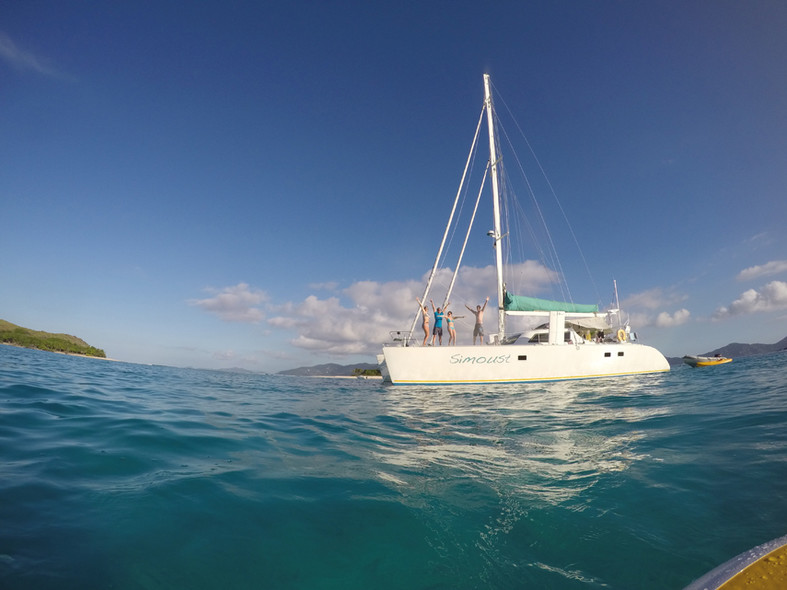
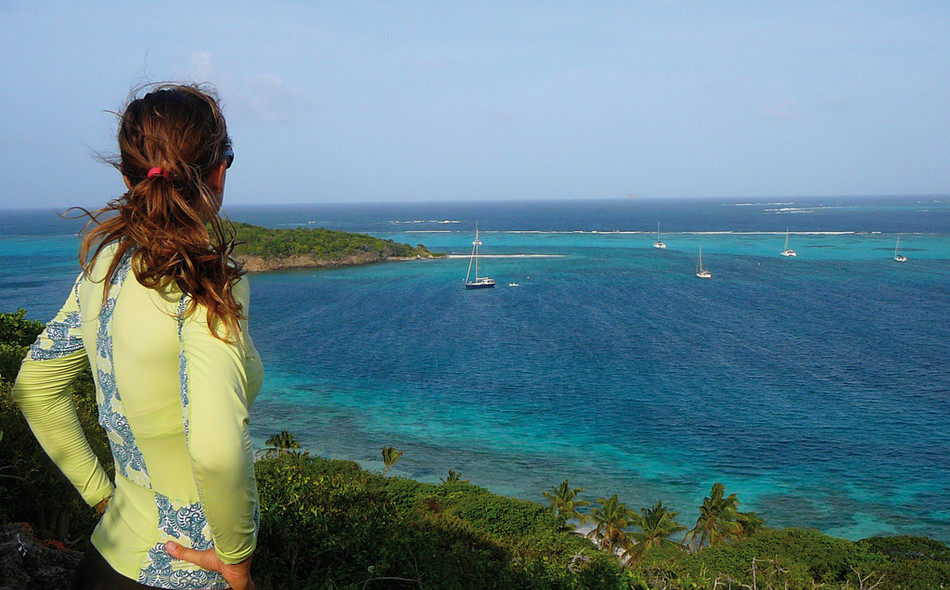
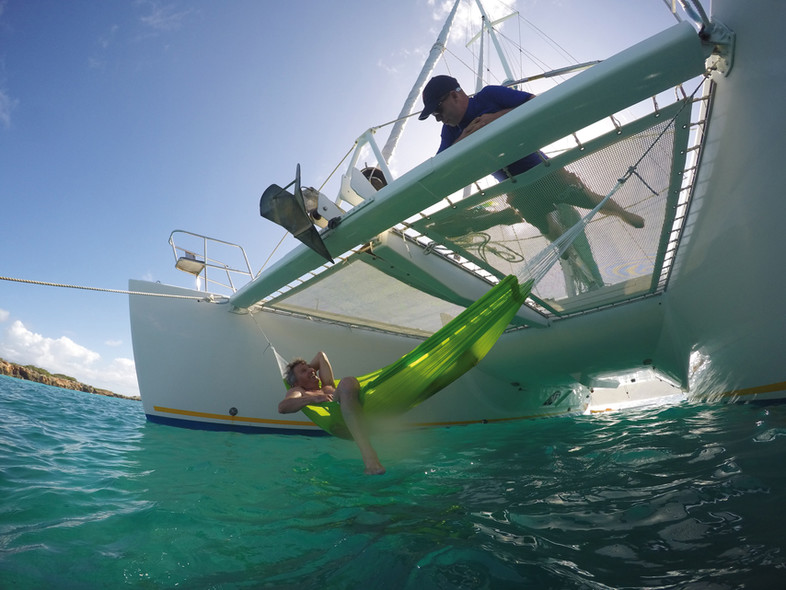
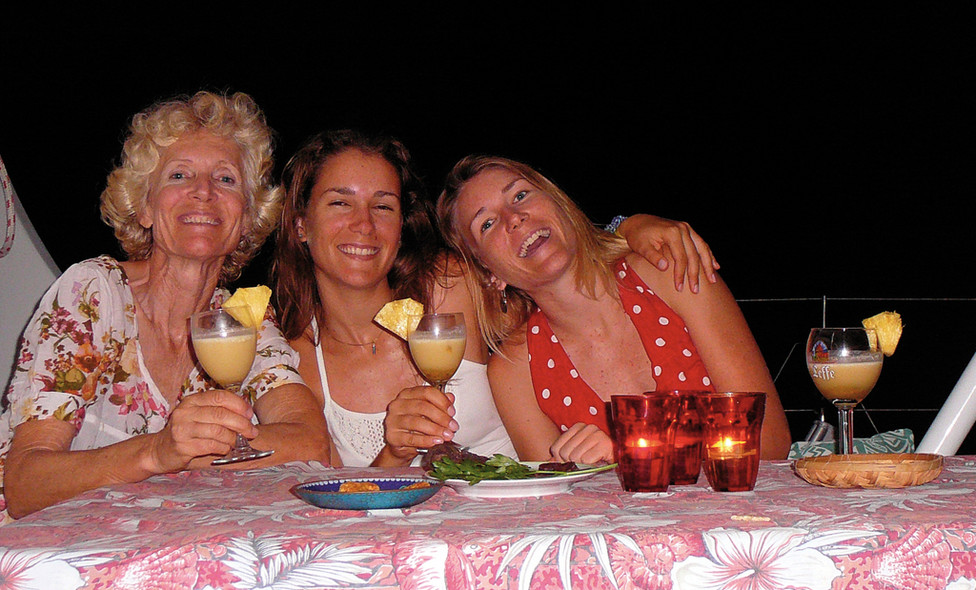
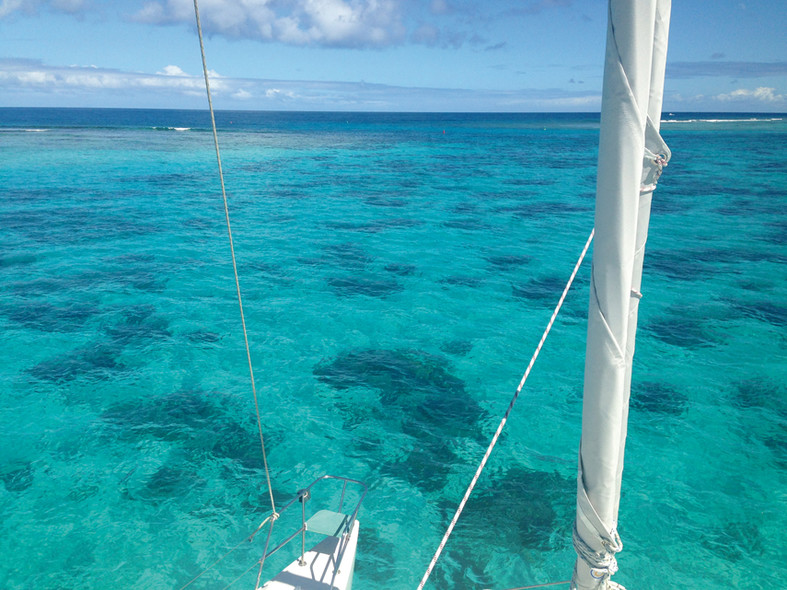
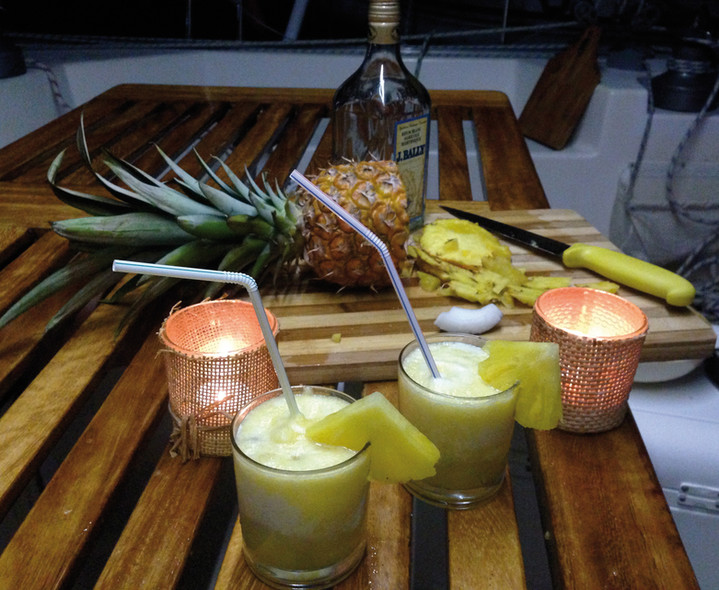
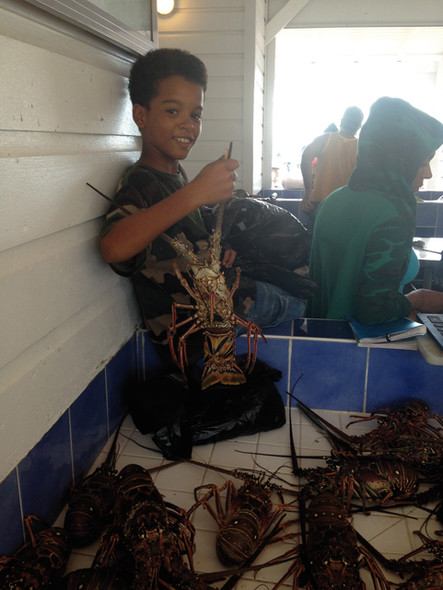
What readers think
Post a comment
No comments to show.